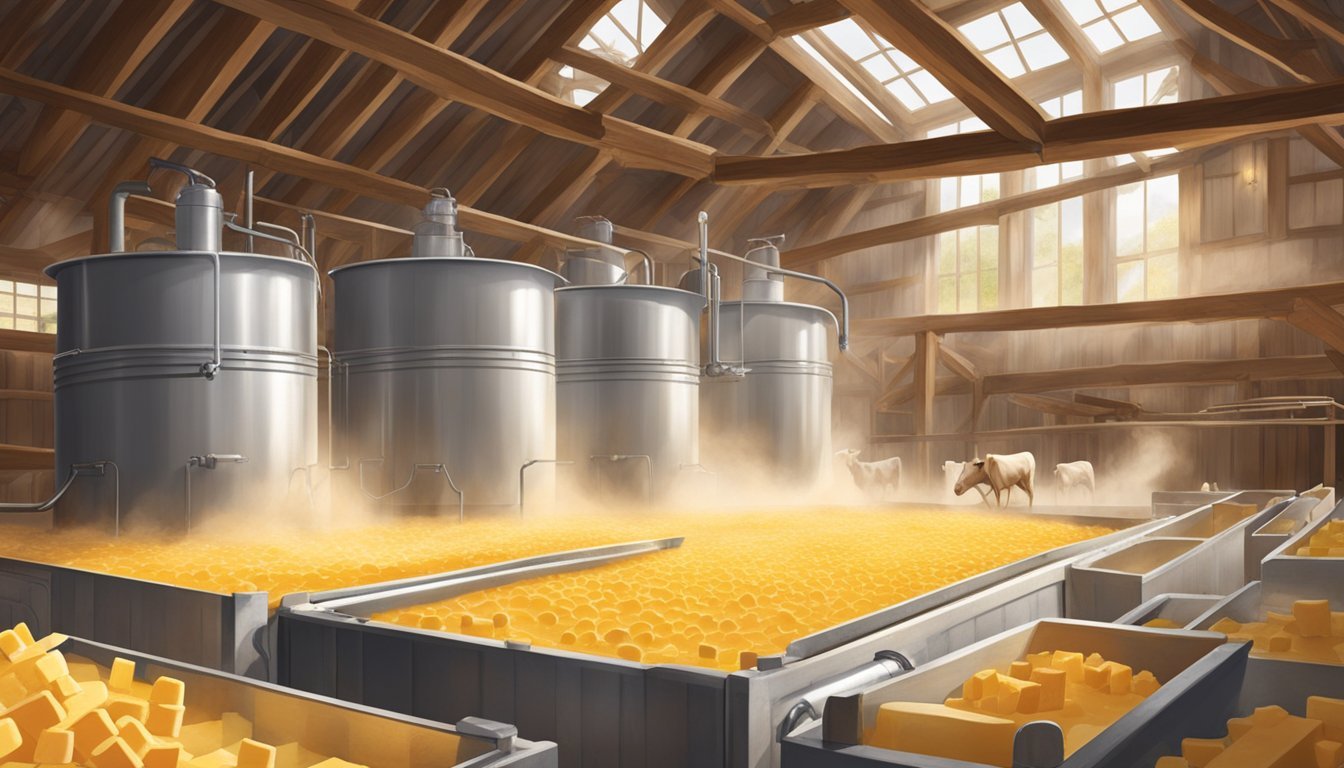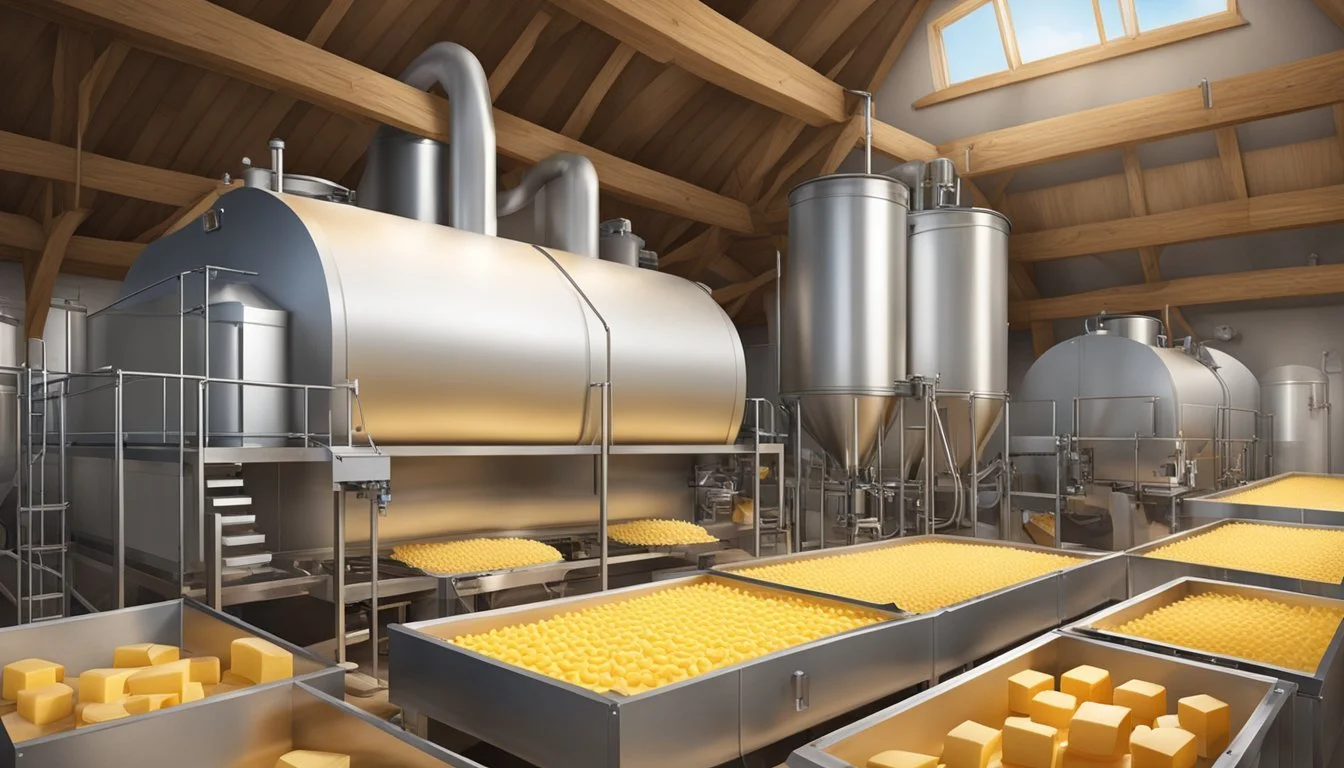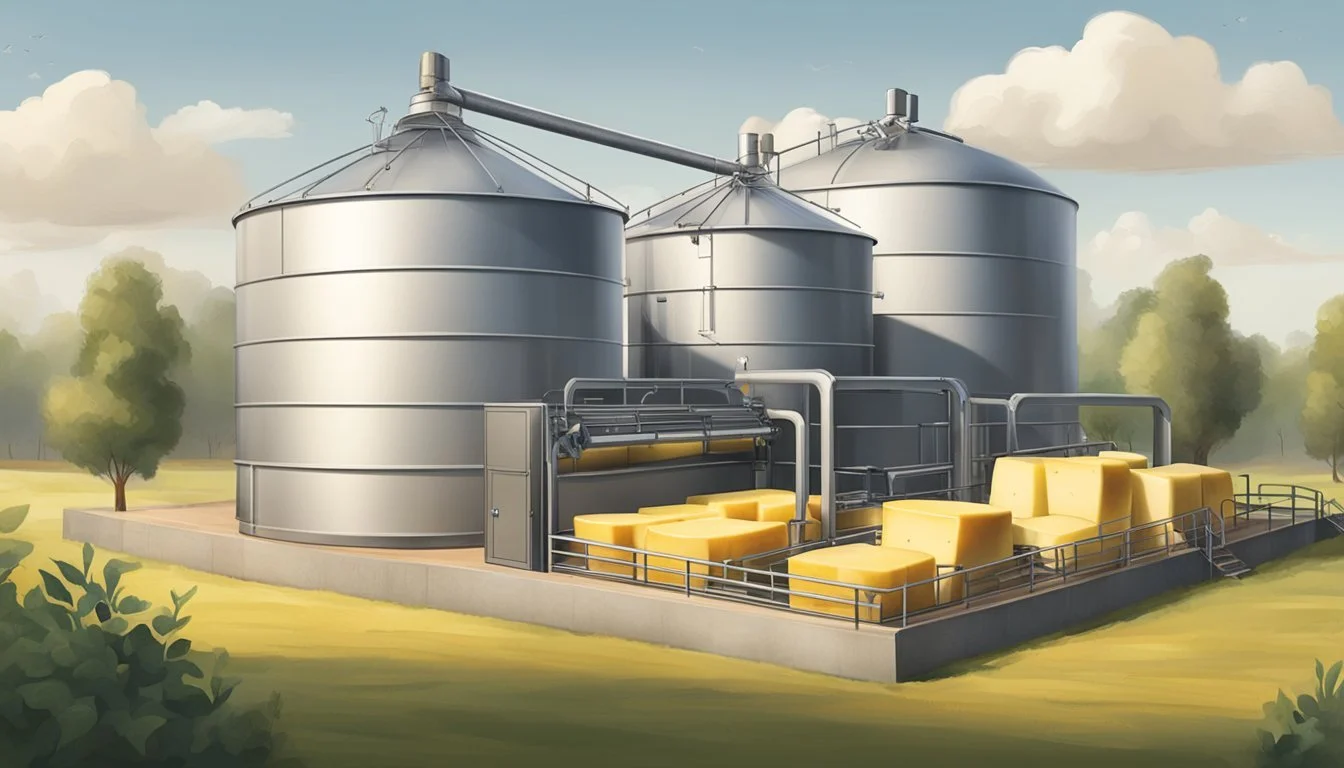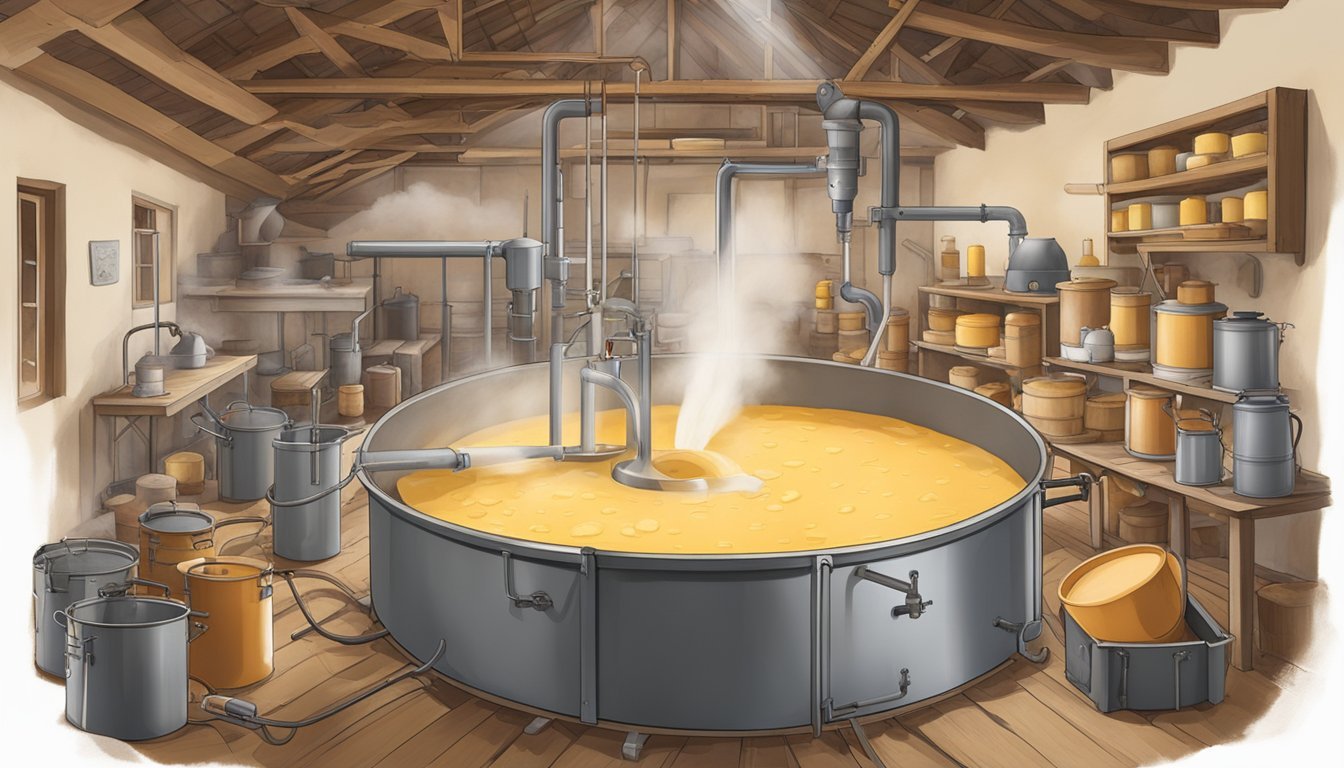Maximizing Cheese Production
Scaling Up with a Large-Scale Cheese Vat on Your Homestead
Maximizing cheese production on a homestead requires efficiency and the right equipment, especially for those looking to scale up their operations. A large-scale cheese vat is a cornerstone piece of equipment in this process, allowing for greater batches of cheese (What wine goes well with cheese?) to be made consistently. These vats, typically constructed from quality stainless steel, provide homesteaders with the ability to pasteurize milk, develop curds, and craft various types of cheeses in larger quantities than traditional methods.
Using a large-scale cheese vat not only enhances production capacity but also streamlines the cheesemaking process. Homesteaders benefit from precise temperature control and better curd handling, crucial for producing high-quality cheese. Equipped with features like easy-to-remove agitators and designed for convenience in curd processing, these vats ensure that the cheese production process is not only efficient but also manageable.
In addition to increasing quantity, utilizing the appropriate cheese vat aids in maintaining the quality that small-scale producers are known for. This elevation in production capability empowers homesteaders to meet higher demand, explore new cheese varieties, and potentially enter new markets—all while retaining the artisanal characteristics of their product. Therefore, incorporating a specialized cheese vat into a homestead dairy operation is a strategic move for those aiming to optimize their cheese production.
Understanding Cheese Production
The production of cheese is a delicate balance of art and science, from selecting quality ingredients to employing advanced technology that maximizes efficiency.
Cheese Types and Characteristics
Different cheeses, such as Cheddar, Blue Cheese, Gouda, and Mozzarella, exhibit a variety of textures and flavors. Cheddar is known for a firm texture and sharp taste, while Blue Cheese is characterized by its creamy consistency and pungent flavor. Mozzarella features a smooth and stretchy quality, ideal for melting, and Gouda offers a buttery and mild flavor.
From Milk to Cheese: The Production Process
Cheese is created by coagulating milk, which leads to curd formation. The process typically involves heating, cutting, stirring, and salting of the curds. Milk can be from various sources such as cows, goats, or sheep and can be used raw or pasteurized.
The Role of Age in Cheese Quality
The age of the cheese significantly influences its quality. Aging allows for the development of aroma, taste, and texture. Cheese can be aged from a few weeks for soft cheeses (What wine goes well with soft cheeses?) to several years for some types of hard cheese.
Ingredients for High-Quality Cheese
The primary ingredient for cheese-making is high-quality, fresh milk. Other key ingredients might include cultures, enzymes, and salts that aid in the development of specific flavor profiles and textures.
Food Safety Standards in Cheese Production
Food safety is paramount in cheese production. Ensuring that dairy products, including cheese, are produced and handled in a manner that prevents contamination is crucial. This includes using pasteurized milk and maintaining sanitary conditions.
The Impact of Cheese Vats on Production Efficiency
Cheese vats play a vital role in production efficiency. They allow for the large-scale production of cheese while ensuring consistency in quality. The choice of a vat - be it an open vat, enclosed vat, or SVG cottage cheese vat - influences the efficiency of the production process.
Technical Aspects of Cheese Vats
Modern cheese vats come with advanced heating systems and automation to ensure precise temperature control and mixing. Customization of vats allows for specific cheese types to be produced with a higher degree of consistency and quality.
Curd Processing in Cheese Vats
Processing curds in a cheese vat typically includes cutting, which determines the cheese's moisture content, stirring, which affects the texture, and millings, which can influence the curd size. These stages are critical to the final quality of the cheese.
Whey Management
After curd formation, whey - the liquid remaining after milk has been curdled - needs to be managed. Effective whey pre-draw strategies in cheese vats improve the yield and quality of cheese, while also dealing with the byproduct in an environmentally responsible way.
Cheese Vat Equipment and Technology
When enhancing cheese production on a homestead, selecting the right cheese vat equipped with advanced technology is crucial. It can significantly impact efficiency, yield, and quality of the cheese made.
Comparing Different Cheese Vat Designs
Types of Cheese Vats:
Open Vats: Traditional model, suitable for artisanal cheese production.
Enclosed Vats: Modern designs that enhance sanitary conditions and maintain consistent cheese quality.
Horizontal Vats: Optimize space and improve curd cutting accuracy.
Materials used are predominantly stainless steel, enhancing cleanliness and longevity of equipment.
Automation in Cheese Vats
Automation in cheese vats facilitates controlling factors such as temperature and pH levels more precisely through automated processes and digital monitoring. It reduces the need for manual intervention, leading to a more consistent product and often higher production rates.
Key Technological Features:
Automated Curd Cutting: Ensures uniform curd size, vital for consistent cheese texture.
Agitator Technology: Tetra Pak® boasts patented agitator blades that promote efficient curd lifting and gentle stirring.
Advantages of Specialized Cheese Vats
Specialized cheese vats allow for the creation of a wide variety of cheeses, including specialty and artisanal cheeses, through customization of vat features. The technology ensures optimal curd development which is necessary for high-quality cheese production. Tetra Pak Cheese Vat Yieldmaster 2, for instance, delivers superior performance tailored across multiple cheese types.
Special Features:
Advanced flow designs for gentle curd treatment
Vat pasteurization capabilities for enhanced versatility
Key Manufacturers of Cheese Vats
Manufacturers such as Tetra Pak and Anco Equipment are leaders in cheese-making equipment, offering a range of vats from pasteurizing cheese vats to advanced customizable designs. APT Inc. provides Advanced Cheese Vats (ACVs) with patented features for production efficiency.
Notable Manufacturers:
Tetra Pak: Offers vats such as Cheese Vat Yieldmaster 2 and HCV for curd making.
Anco Equipment: Provides stainless steel vats and boasts comprehensive cheese-making solutions.
APT Inc.: Specializes in vats with advanced designs including unique agitator panels for improved yield.
Operational Efficiency and Cost-Effectiveness
Maximizing cheese production in a homestead setup hinges on achieving a balance between operational efficiency and cost-effectiveness. Implementing optimized equipment and adopting strategic management practices are pivotal to enhancing the economic viability of large-scale cheese vat operations.
Enhancing Production with Optimized Equipment
In the cheese making process, the utilization of an optimized large-scale cheese vat is crucial. It ensures uniformity in heating and curd processing, which directly relates to the quality and volume of cheese produced. Capacity adjustments in equipment cater to demand fluctuations, promoting efficient production schedules.
Cost Analysis of Large-Scale Cheese Vat Ownership
Ownership of a large-scale cheese vat represents a significant investment with costs including the vat itself, ancillary equipment, and installation. Initial pricing may range substantially, but operational costs are recouped over time through increased production volume and reduced per unit cost. Regular maintenance schedules prevent costly downtimes and ensure long-term cost-effectiveness.
Strategies for Dairy Producers to Diversify
Dairy producers can bolster revenue by diversifying their product range to include various cheese types. A multipurpose cheese vat accommodates this strategy, enabling the production of different cheeses without additional investment. This flexibility is efficient and keeps production within cost-effective margins while meeting market demand.
Collaboration with Cheese Makers and Societies
Partnerships with cheese makers and affiliations with organizations such as the American Cheese Society enrich knowledge exchange. These collaborations lead to improvement in techniques, equipment, and marketing strategies, thereby enhancing efficiency and cost-effectiveness of the cheese making process.
Facilities and Infrastructure for Cheese Vat Operations
The design and layout of facilities significantly influence operational efficiency. Infrastructure should allow for logical flow from milk reception to cheese aging, ensuring the most efficient use of space and time. Well-planned facilities reduce contamination risks and streamline the cheese production cycle.
Upgrading to Automated Systems
Incorporating automated technologies into cheese vat operations transforms the production landscape. Automation delivers precision in the cheese making process, from curd cutting to whey drainage, reducing labor costs and enhancing consistency. Adopting such systems proves cost-effective despite the initial investment, by offering superior control over large-scale production variables.
Choosing the Right Cheese Vat for Your Homestead
Selecting a cheese vat for your homestead's cheese production is a critical decision that influences the types of cheese you can produce, from soft to hard varieties, and the efficiency of your cheese-making process.
Determining the Type of Cheese Production
When embarking on your cheesemaking journey, you must first define the types of cheese you aim to produce. Each cheese type, be it hard cheeses like Cheddar and Parmesan, or soft cheeses such as Brie and Ricotta, demands specific conditions for coagulation, acidity, and temperature control.
Hard Cheese: Requires a vat that can maintain higher temperatures and facilitate the pressing of curds to expel whey.
Soft Cheese: Needs a more delicate temperature control to protect the fragile curds during the production process.
Furthermore, if specialty or artisanal cheeses are the goal, which often have unique requirements, a vat that allows for precise temperature and environmental control becomes indispensable. A large-scale cheese vat will generally provide:
Ease of Use: Automated features for temperature control and stirring to ensure consistent quality.
Versatility: Capabilities to produce a variety of cheese types, including specialty and artisanal cheeses, without the need for separate equipment.
It is advisable to consider cheese vats that are tailored to meet stringent sanitary requirements, often symbolized by certifications like the 3A stamp, to ensure food safety standards are met. Additionally, choosing a vat with a shape that guarantees even heat distribution, such as an oval or double O design, can prevent cold spots and ensure uniform cheese quality.
By meticulously selecting a cheese vat that aligns with your production goals, you lay a solid foundation for a successful homestead cheesemaking operation.





